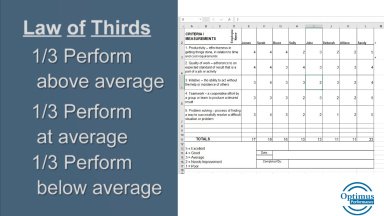
Publication number: ELQ-16079-1
View all versions & Certificate

Rule of Thirds Employee Evaluation Tool
Employees can be divided into three categories related to employee performance. This is called the rule of thirds
Further information
To use the rule of thirds to determine who are your above average, average and below average employees
Employee performance evaluation and employee development planning
Individual employee performance review



